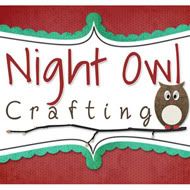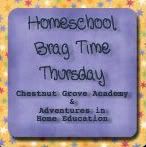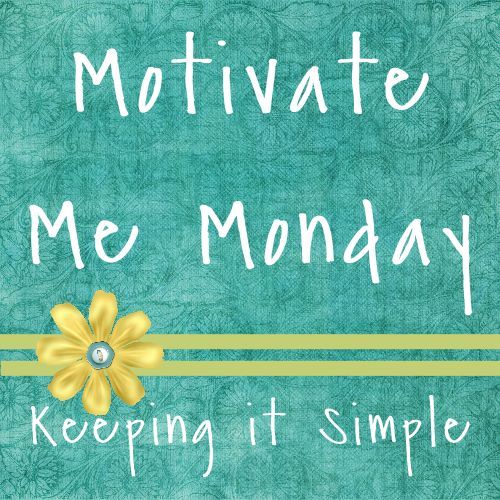My friend invited us over for an afternoon of tie-dying and I must say that I had forgotten how much fun it is. This was an excellent activity for the children. They were able to tie on the rubber bands, dye the shirts and remove the rubber bands without much help. They loved seeing the completed shirts. I would highly recommend this activity for a great afternoon of summer fun!
To see more of our crafty activities please visit our Craft Page.
Speed! Giveaway - What DID We Do All Day?
Good news! It's time for another Speed! giveaaway!
Visit the What DID we do all day? blog this week for a chance to win box Speed! The fun new card game “Speed!” is a great way to teach multiplication. It uses skip counting to teach children to multiply and how to multiply faster.
I really like the What DID we do all day? blog because it is all about Montessori. Actually I found it through a Montessori on-line group, and then I found an unsolicited review she did of Speed! As you can imagine I was super excited. Here is a link to her original post about Speed! Check it out.
If you are familiar with Speed! you may have noticed the game has a lot in common with Montessori, yet it is not Montessori. Why is this?
Well, my daughter attended a Montessori school for two years, and my brother attended a Montessori pre-school. I attended a school called open-classroom during my elementary years. It had a lot in common with Montessori in that there were no text books, the kids sat at tables, we called our teachers by their first names, the kids worked on items at their own level that they were interested in, and the teachers did not stand in front of the class very often. Yet this was not a Montessori school. My life experiences have brought me very close to Montessori, but I have always been a bit of an outsider. So I guess it's the same with Speed! It looks a lot like Montessori, but it's a bit of an outsider.
Visit What DID we do all day? for rules and to enter. Don't wait. You can enter once per day between today and next Tuesday. The winner will be announced next Wednesday at What DID we do all day.
-giveaway open to US and APO addresses only
Visit the What DID we do all day? blog this week for a chance to win box Speed! The fun new card game “Speed!” is a great way to teach multiplication. It uses skip counting to teach children to multiply and how to multiply faster.
I really like the What DID we do all day? blog because it is all about Montessori. Actually I found it through a Montessori on-line group, and then I found an unsolicited review she did of Speed! As you can imagine I was super excited. Here is a link to her original post about Speed! Check it out.
If you are familiar with Speed! you may have noticed the game has a lot in common with Montessori, yet it is not Montessori. Why is this?
Well, my daughter attended a Montessori school for two years, and my brother attended a Montessori pre-school. I attended a school called open-classroom during my elementary years. It had a lot in common with Montessori in that there were no text books, the kids sat at tables, we called our teachers by their first names, the kids worked on items at their own level that they were interested in, and the teachers did not stand in front of the class very often. Yet this was not a Montessori school. My life experiences have brought me very close to Montessori, but I have always been a bit of an outsider. So I guess it's the same with Speed! It looks a lot like Montessori, but it's a bit of an outsider.
Visit What DID we do all day? for rules and to enter. Don't wait. You can enter once per day between today and next Tuesday. The winner will be announced next Wednesday at What DID we do all day.
-giveaway open to US and APO addresses only
Rotting Apples
We were inspired by the rotting apples post on the Science Sparks blog and decided to try our own experiment. Our results came out slightly different.
The experiment was to take four slices of apple, place them in four different conditions and then observe the decomposition. We placed our apples in salt water, vinegar, lemon juice and open air just as was done by Science Sparks.
The apple that was left in open air was covered in mold and definitely showed the most decomposition. We live in Germany and it is usually very humid here. Perhaps that is the reason our results were different.
Then we repeated the experiment a second week, but used different liquids as preservatives. The apples were placed in corn syrup, apple juice, oil and plain water. The apple in the apple juice was the only one to develop mold. The kids also noted the smell of fermentation. Although they thought it smelled like beer.
Linked To
STEM Mom
Show and Tell Saturday Link-Up
This post was featured on STEM Mom.
The experiment was to take four slices of apple, place them in four different conditions and then observe the decomposition. We placed our apples in salt water, vinegar, lemon juice and open air just as was done by Science Sparks.
The apple that was left in open air was covered in mold and definitely showed the most decomposition. We live in Germany and it is usually very humid here. Perhaps that is the reason our results were different.
Then we repeated the experiment a second week, but used different liquids as preservatives. The apples were placed in corn syrup, apple juice, oil and plain water. The apple in the apple juice was the only one to develop mold. The kids also noted the smell of fermentation. Although they thought it smelled like beer.
Linked To
STEM Mom
Show and Tell Saturday Link-Up
This post was featured on STEM Mom.
China History Co-op. - Week 6 - Qin Dynasty
Week 6 - We built The Great Wall of China.
The Qin Emperor united the warring states of China through warfare. He established many standards including money, weights and measures and many more such as standard axle width. We discussed the meaning of united and then did an activity to demonstrate how not having standard money works.
The kids split up into groups of two. Each group received a quantity of something to trade - silks, spices, rice, wheat, beads, etc... Some measuring tools were available - a scale, measuring spoons and measuring cups. At first each group was only allowed to trade with one other group, but then we opened it up. The kids loved trading their items in the market.
Then we read the book The Great Wall of China by Leonard Everett Fisher and began our great walls.
The walls were made from cardboard, sugar cubes and icing glue.
Icing Glue Recipe
6 egg whites
2 lbs powdered sugar
1 tsp cream of tartar
The kids started with the raised walkways. They drew their walkways on cardboard, cut them out and then transferred the path onto the base. On the base they dribbled icing along the path and then added sugar cubes.
It took a lot of people to build The Great Wall of China. Each child built a section and together we had a great wall.
To see our other history activities please visit our history page.

The Qin Emperor united the warring states of China through warfare. He established many standards including money, weights and measures and many more such as standard axle width. We discussed the meaning of united and then did an activity to demonstrate how not having standard money works.
The kids split up into groups of two. Each group received a quantity of something to trade - silks, spices, rice, wheat, beads, etc... Some measuring tools were available - a scale, measuring spoons and measuring cups. At first each group was only allowed to trade with one other group, but then we opened it up. The kids loved trading their items in the market.
Then we read the book The Great Wall of China by Leonard Everett Fisher and began our great walls.
The walls were made from cardboard, sugar cubes and icing glue.
Icing Glue Recipe
6 egg whites
2 lbs powdered sugar
1 tsp cream of tartar
The kids started with the raised walkways. They drew their walkways on cardboard, cut them out and then transferred the path onto the base. On the base they dribbled icing along the path and then added sugar cubes.
Once their walls were high enough they glued the walkway in place and added a few more cubes along the edges of the walkway.
It took a lot of people to build The Great Wall of China. Each child built a section and together we had a great wall.
To see our other history activities please visit our history page.

Speed! - Patterns in the Cards - Columns
This is the first post in an extension of the Speed! Patterns in the Cards posts. - I created the fun card game Speed!
to teach multiplication. It uses skip counting to teach children to
multiply and how to multiply faster. The series of Patterns in the Cards
blog posts are meant to show some activities that can aid in
number sense development using the Speed! cards. I plan to go through several combinations of Speed! card decks with you searching for patterns. - I hope you are ready to join me on this fun, visual math journey.
Cool patterns become visible when two decks of Speed! cards are placed one on top of the other matching numbers.
Let's begin with Two Speed. Lay your cards out like this.
- Now get out Five Speed and find the cards the two decks have in common (10 and 20).
- Lay the common cards from Five Speed on top of the corresponding Two Speed cards.
- Five Speed includes the numbers 30, 40 and 50. These cards are also in the extended Two Speed pattern. Continue the pattern by placing Five Speed cards on top of Two Speed cards.
- An extended Five Speed pattern (counting by 5's) contains the numbers 60, 70 and 80 which are also in the extended Two Speed pattern (counting by 2's). Place the Five Speed cards on top of the corresponding Two Speed cards.
Look what happens! The resulting pattern is clearly a column.
Now repeat the activity using Three Speed, Six Speed or another deck as the base instead of Two Speed. Place the Five Speed cards on top of the corresponding numbers. What does your pattern look like?
Cool patterns become visible when two decks of Speed! cards are placed one on top of the other matching numbers.
Let's begin with Two Speed. Lay your cards out like this.
- Now get out Five Speed and find the cards the two decks have in common (10 and 20).
- Lay the common cards from Five Speed on top of the corresponding Two Speed cards.
- Five Speed includes the numbers 30, 40 and 50. These cards are also in the extended Two Speed pattern. Continue the pattern by placing Five Speed cards on top of Two Speed cards.
- An extended Five Speed pattern (counting by 5's) contains the numbers 60, 70 and 80 which are also in the extended Two Speed pattern (counting by 2's). Place the Five Speed cards on top of the corresponding Two Speed cards.
Look what happens! The resulting pattern is clearly a column.
Now repeat the activity using Three Speed, Six Speed or another deck as the base instead of Two Speed. Place the Five Speed cards on top of the corresponding numbers. What does your pattern look like?
Hands on Math - Laundry
Durning an extended stay, while traveling with my husband for work, we had the opportunity to do laundry in the hotel.
Exchanging coins with the lady at the front desk turned out to be an excellent math lesson for my children. They were 5 and 7 years old at the time. It had such a big impact because we only needed a few quarters. One day I gave one child 25 pennies and the other two dimes and a nickel. They were stunned when they received only one quarter each in the exchange. On the second day we did laundry they each exchanged a one dollar bill. I love how life, math and homeschooling lessons present themselves.
Exchanging coins with the lady at the front desk turned out to be an excellent math lesson for my children. They were 5 and 7 years old at the time. It had such a big impact because we only needed a few quarters. One day I gave one child 25 pennies and the other two dimes and a nickel. They were stunned when they received only one quarter each in the exchange. On the second day we did laundry they each exchanged a one dollar bill. I love how life, math and homeschooling lessons present themselves.
Speed! - Patterns in the Cards - Nine Speed
This is the eighth and last post in the series of posts. - Speed! Patterns in the Cards - I created the fun card game Speed!
to teach multiplication. It uses skip counting to teach children to
multiply and how to multiply faster. The series of Patterns in the Cards
blog posts are meant to show some simple activities that can aid in
number sense development using the Speed! cards.
Nine Speed
Lay your cards out like this. What patterns do you see?
Here are the patterns I found with my son.
1. You can count from 0-9 with the ones digit. Start at the last card and go backwards. Let me write it differently so it's easier to read.
9 - 8 - 7
6 - 5 - 4
3 - 2 - 1
0
2. You can count from 0-9 with the tens digit. Start at the first card. Let me write it differently so it's easier to read.
0 - 1 - 2
3 - 4 - 5
6 - 7 - 8
9
Do you think these patterns would continue if we added more cards? Continue laying out Nine Speed cards with the backs up while counting by nines in your head or writing the numbers on small slips of paper.
99 - 108 - 117
126 - 135 - 144
153 - 162 - 171
180
189 - 198 - 207
216 - 225 - 234
243 - 252 - 261
270
The patterns do continue! The ones digit repeats and the tens digit continues to increase.
Another interesting thing about the nines is that if you add the individual digits for any card together the result is a nine or a number divisible by 9. For example 63 is a card in Nine Speed. 6+3=9. 135 is another number you reach when counting by nines. 1+3+5=9.
Did you find any more patterns? Can you lay your cards out differently and find more patterns?
Do you remember the patterns in Three Speed and Seven Speed? They also contained each number in the ones digit column. Even number Speed cards only contained the digits 2, 4, 6, 8 and 0 in the ones digit and Five Speed only contained 0 and 5.
Next week we will begin finding patterns using two decks of Speed cards at the same time. We will begin with Two Speed and Five Speed.
Nine Speed
Lay your cards out like this. What patterns do you see?
Here are the patterns I found with my son.
1. You can count from 0-9 with the ones digit. Start at the last card and go backwards. Let me write it differently so it's easier to read.
9 - 8 - 7
6 - 5 - 4
3 - 2 - 1
0
2. You can count from 0-9 with the tens digit. Start at the first card. Let me write it differently so it's easier to read.
0 - 1 - 2
3 - 4 - 5
6 - 7 - 8
9
Do you think these patterns would continue if we added more cards? Continue laying out Nine Speed cards with the backs up while counting by nines in your head or writing the numbers on small slips of paper.
99 - 108 - 117
126 - 135 - 144
153 - 162 - 171
180
189 - 198 - 207
216 - 225 - 234
243 - 252 - 261
270
The patterns do continue! The ones digit repeats and the tens digit continues to increase.
Another interesting thing about the nines is that if you add the individual digits for any card together the result is a nine or a number divisible by 9. For example 63 is a card in Nine Speed. 6+3=9. 135 is another number you reach when counting by nines. 1+3+5=9.
Did you find any more patterns? Can you lay your cards out differently and find more patterns?
Do you remember the patterns in Three Speed and Seven Speed? They also contained each number in the ones digit column. Even number Speed cards only contained the digits 2, 4, 6, 8 and 0 in the ones digit and Five Speed only contained 0 and 5.
Next week we will begin finding patterns using two decks of Speed cards at the same time. We will begin with Two Speed and Five Speed.
Butterfly Mosaics
My daughter received this Butterfly Mosaic kit for her birthday and it is wonderful! There are seven types of sticky-back jewels that she places on the stiff cardboard butterfly on top of numbers corresponding with each jewel type. It remeinds me of needlepoint and cross-stitching in many ways. In both activities colors (yarn in needlepoint and sticker-jewels in the mosaics) must be placed in appropriate locations on the canvas. She loves it and will work for hours at a time on these cute butterflies just as I will work for hours on a needlepoint project.
The Orb Factory has many kits in addition to butterflies. There are also dinosaurs, animals, unicorns, vehicles, pirates and more.

This post is linked to:
Life's Little Adventures
Show and Share Saturday
It's Playtime
* I did not receive any compensation for this recommendation. I'm just a homeschooling mom who has found many products that I like. If you're interested in the products I recommend on this blog I want to make it easy for you to find them.
** I am an Amazon associate and receive a small portion of the sales on orders made after clicking in from this site, which I promptly spend on homeschooling books and supplies for my children.
The Orb Factory has many kits in addition to butterflies. There are also dinosaurs, animals, unicorns, vehicles, pirates and more.

This post is linked to:
Life's Little Adventures
Show and Share Saturday
It's Playtime
* I did not receive any compensation for this recommendation. I'm just a homeschooling mom who has found many products that I like. If you're interested in the products I recommend on this blog I want to make it easy for you to find them.
** I am an Amazon associate and receive a small portion of the sales on orders made after clicking in from this site, which I promptly spend on homeschooling books and supplies for my children.
Speed! - Patterns in the Cards - Eight Speed
This is the seventh post in the series of posts. - Speed! Patterns in the Cards - I created the fun card game Speed!
to teach multiplication. It uses skip counting to teach children to
multiply and how to multiply faster. The series of Patterns in the Cards
blog posts are meant to show some simple activities that can aid in
number sense development using the Speed! cards.
Eight Speed
Lay your cards out like this. What patterns do you see?
Here are the patterns I found with my son.
1. Ones digit is the same looking down the columns. 8-6-4-2-0.
2. The ones digits count backwards by 2's.
3. Tens digit is a 0-1-2-3-4 and then a 4-5-6-7-8.
Do you think these patterns would continue if we added more cards? Continue laying out Eight Speed cards with the backs up while counting by eights in your head or writing the numbers on small slips of paper.
88 - 96 - 104 - 112 - 120
128 - 136 - 144 - 152 - 160
The patterns do continue!
Did you find any more patterns? Can you lay your cards out differently and find more patterns?
One thing I found interesting about the eights is that the one digits are the same as Two Speed, but in reverse order. (8-6-4-2-0 Eight Speed) & (2-4-6-8-0 Two Speed). This is more obvious when you do the Waldorf Circle exercise.
- draw a circle
- place 10 evenly spaced dots around the perimeter of the circle
- label the dots 0 thru 9
- starting at 0 draw lines in the order of the ones digit looking down the columns 8 - 6 - 4 - 2 - 0
- If you haven't tried this activity with Two Speed try it now and you should create a pentagon in reverse order.
When you are done with this activity get out Nine Speed and get ready for next week.
Eight Speed
Lay your cards out like this. What patterns do you see?
Here are the patterns I found with my son.
1. Ones digit is the same looking down the columns. 8-6-4-2-0.
2. The ones digits count backwards by 2's.
3. Tens digit is a 0-1-2-3-4 and then a 4-5-6-7-8.
Do you think these patterns would continue if we added more cards? Continue laying out Eight Speed cards with the backs up while counting by eights in your head or writing the numbers on small slips of paper.
88 - 96 - 104 - 112 - 120
128 - 136 - 144 - 152 - 160
The patterns do continue!
Did you find any more patterns? Can you lay your cards out differently and find more patterns?
One thing I found interesting about the eights is that the one digits are the same as Two Speed, but in reverse order. (8-6-4-2-0 Eight Speed) & (2-4-6-8-0 Two Speed). This is more obvious when you do the Waldorf Circle exercise.
- draw a circle
- place 10 evenly spaced dots around the perimeter of the circle
- label the dots 0 thru 9
- starting at 0 draw lines in the order of the ones digit looking down the columns 8 - 6 - 4 - 2 - 0
- If you haven't tried this activity with Two Speed try it now and you should create a pentagon in reverse order.
When you are done with this activity get out Nine Speed and get ready for next week.
Quilting - Great Math Activity
Quilting is an excellent handicraft as well as a great hands-on math activity. Estimating material requirements, fitting the pieces together, accounting for seam allowances, and measuring the perimeter for the border fabric all involve math.
My daughter created this quilt when she was seven years old.
This one was made from old clothes when she was eight.
She followed a pattern in a book for this one, which took over a year to complete. She finished it when she was nine years old.
Quilting can take a lot of time and be very rewarding. This Tic-Tac-Toe Game is a great beginning quilting project.

Subscribe to:
Posts (Atom)

_wm.JPG)
_wm.JPG)
_wm.JPG)
_wm.JPG)
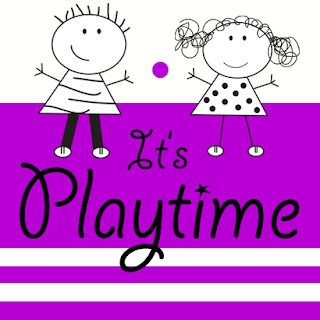





.JPG)


_wm.JPG)
_wm.JPG)
_wm.JPG)
_wm.JPG)
_wm.JPG)
_wm.JPG)
_wm.JPG)
_wm.JPG)
_wm.JPG)
_wm.JPG)
_wm.JPG)

_wm.JPG)
_wm.JPG)
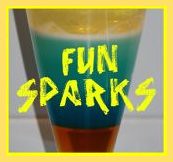


_wm.JPG)


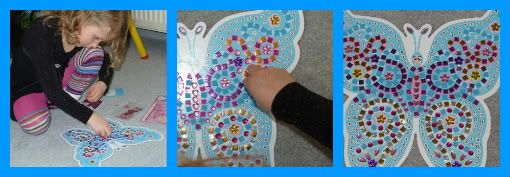
.JPG)
_wm.JPG)
_wm.JPG)

.JPG)
.JPG)
.JPG)
